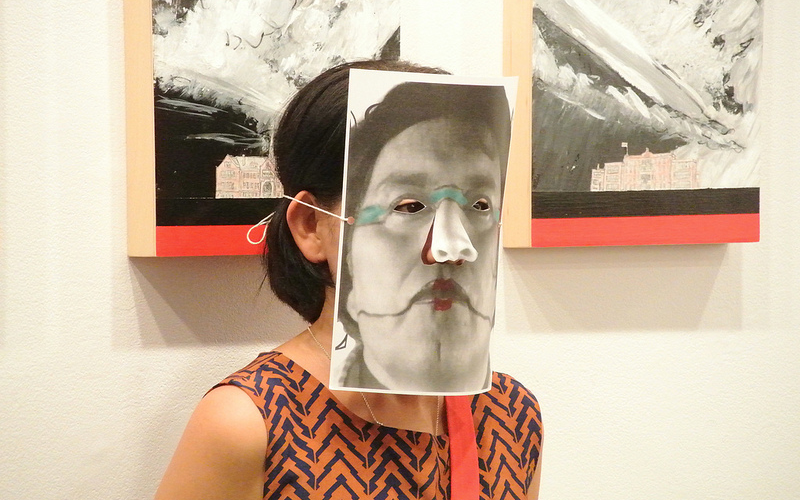
art truth
Last month, while the Truth and Reconciliation Commission’s (TRC) hearings were taking place in Vancouver, a group of artists in Kamloops was telling its own story about residential schools through art.
The exhibit was the final piece of the “Art + Reconciliation” MOOC (Massive Open Online Course) which took place from July 15 to Sept. 30, 2013 at Thompson Rivers University.
Since its inception in 2008, the TRC has heard thousands of residential school survivors talk about their experiences. This MOOC took a different approach.
Less of a traditional MOOC (since there were no assignments or grades) Art + Reconciliation (rmooc) served as platform where Aboriginal and non-Aboriginal participants shared ideas and collaborated on artwork around the theme of reconciliation.
The course was the brainchild of a team of researchers including Dr. Ashok Mathur, the Canada Research Chair in Cultural and Artistic Inquiry at TRU and the director of the Centre for innovation in Culture and the Arts in Canada.
Mathur’s interest is in understanding how art functions within social justice environments. How do communities and cultures come together after traumatic instances?
What role does art play as an agent for change?
During the online course, the 126 participants (mostly from Canada and the U.S.) explored these issues by looking at the history of the residential school system in Canada and the purpose and outcomes of the TRC. They also discussed ways they could use art to create and increase an awareness of Indigenous practices and histories from Aboriginal and non-Aboriginal perspectives.
Twelve of the artist-participants came to Kamloops for the “Reconsidering Reconciliation” residency for one month in August. In September, they exhibited their work at the TRU Art Gallery and the FINA Art Gallery at the University of British Columbia Okanagan (Kelowna).
Peter Morin with Drum
The result was collaborative multi-media storytelling with compelling imagery including drawings, photographs, sculptures, videos, poetry, drumming and performances.
“One of the most powerful pieces for me was Peter Morin’s performance about hair,” says Mathur. “When children arrived at residential school, they would immediately have their hair cut short, which was both humiliating and confusing for them. A number of the artists looked at that through drumming, drawings and performance. But what stood out for me about Peter’s piece was that it incorporated other people’s energy to tell the story.”
Mathur’s biggest takeaway from rmooc is the ongoing sense of generosity it generated. He says he is now a firm believer that artistic inquiry allows people to become intimate and share. “Artistic investigation can and should be its own form of research, not just the subject of research by academic models, but the research in and of itself,” says Mathur.
The research team will present these outcomes when it meets again at the final TRC national gathering in Edmonton in the spring of 2014. Additionally, several of the residency artists will meet again next June at the Encuentro (Encounters) performance conference in Montreal.
